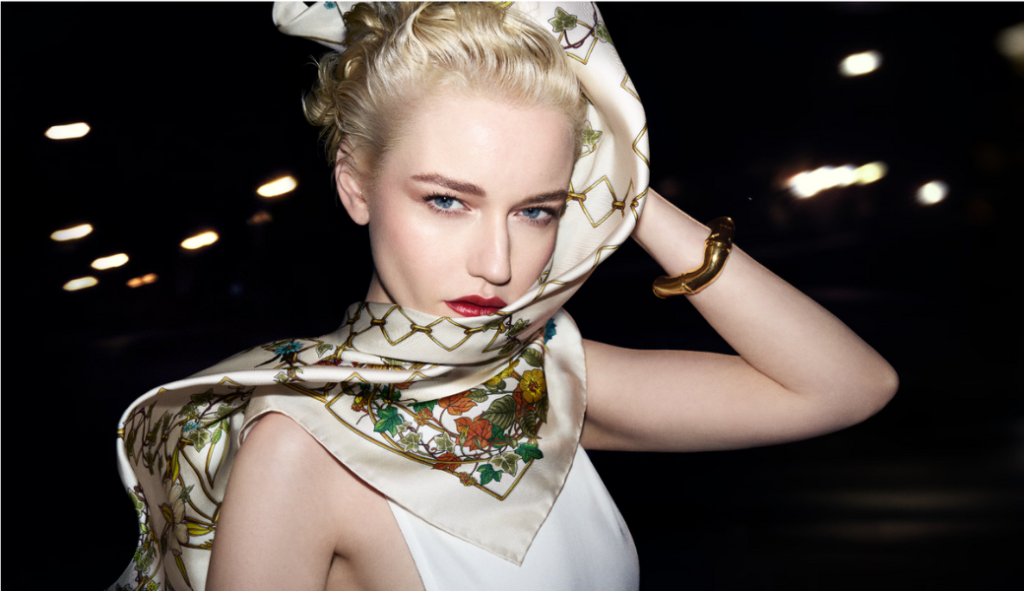Founded in 1921 by Guccio Gucci, the brand was born in the heart of Florence, inspired by the city’s rich artisanal heritage. Guccio’s vision was to create leather goods that reflected the excellence of Italian craftsmanship. The brand quickly became synonymous with refined style, attracting aristocrats and celebrities alike. Even today, Gucci maintains its Florentine roots, with its headquarters and the Gucci Garden museum located in the historic Palazzo della Mercanzia, offering an immersive journey into the brand’s evolution right in Piazza della Signoria.
Gucci’s Impact on Italian Fashion
Gucci has played a pivotal role in shaping Italian fashion on the global stage. It pioneered the concept of combining heritage with modernity, a formula that has made Italian fashion so revered. Under the creative direction of figures like Tom Ford, Frida Giannini, and Alessandro Michele, Gucci has continually reinvented itself, setting trends that define generations. The house’s ability to merge classic elements with bold, avant-garde designs has cemented its status as an enduring force in luxury fashion.
The Flora Collection: A Tribute to Italian Art and Nature
For much of its early history, Gucci’s designs were deeply rooted in themes of aristocracy, featuring motifs linked to equestrian sports and traditional luxury. A turning point came in 1966 when Princess Grace of Monaco visited Gucci’s boutique in Milan and purchased a green leather handbag. To express his gratitude, Rodolfo Gucci, son of the founder Guccio Gucci, wished to present her with a special gift. The princess, known for her love of flowers and botanical artistry, modestly requested a scarf. However, Gucci felt that nothing in their collection was truly fit for royalty.
Inspired by her passion for florals, Gucci commissioned the celebrated Italian illustrator Vittorio Accornero de Testa to create an exclusive floral design. Accornero, renowned for his botanical artistry and experience illustrating fairy tales, crafted what would become the legendary Flora print. The intricate design featured a white background adorned with 37 vivid colors and an array of blooming flowers, butterflies, and other natural elements. The composition paid homage to Florence’s artistic heritage, drawing inspiration from Sandro Botticelli’s La Primavera and The Birth of Venus, where the nymph Flora is depicted wearing a flower-adorned gown.
Gucci presented the scarf to Princess Grace as though offering a bouquet, and its elegance and charm quickly captivated the public. The Flora print soon became a sought-after collector’s item and expanded beyond scarves. By 1969, it adorned dresses, and in the following decades, it continued to evolve, appearing on bags and other accessories. In 2005, then-creative director Frida Giannini revitalized the Flora motif, incorporating it into ready-to-wear collections and even launching a fragrance dedicated to its timeless beauty. The print has continued to be reinterpreted, with Charlotte Casiraghi, Princess Grace’s granddaughter, wearing it in a 2014 Gucci campaign. More recently, Alessandro Michele fused it with the signature GG monogram in the Spring 2023 collection, ensuring that the Flora print remains an integral part of Gucci’s evolving aesthetic.
Gucci’s Enduring Influence
From its signature horsebit loafers to the GG monogram, from the revival of vintage aesthetics to daring new designs, Gucci continues to redefine the boundaries of fashion. Its dedication to craftsmanship, storytelling, and artistic inspiration makes it an essential part of Florence’s cultural and economic landscape. More than just a brand, Gucci is a testament to the timeless elegance of Italian fashion, proving that Florence remains at the heart of global style.
As Gucci moves forward, embracing sustainability and innovation, its legacy as a beacon of Italian fashion remains unshakable. And at its core, the Flora collection continues to bloom, a reminder of how Florence’s artistic past shapes the future of fashion.

